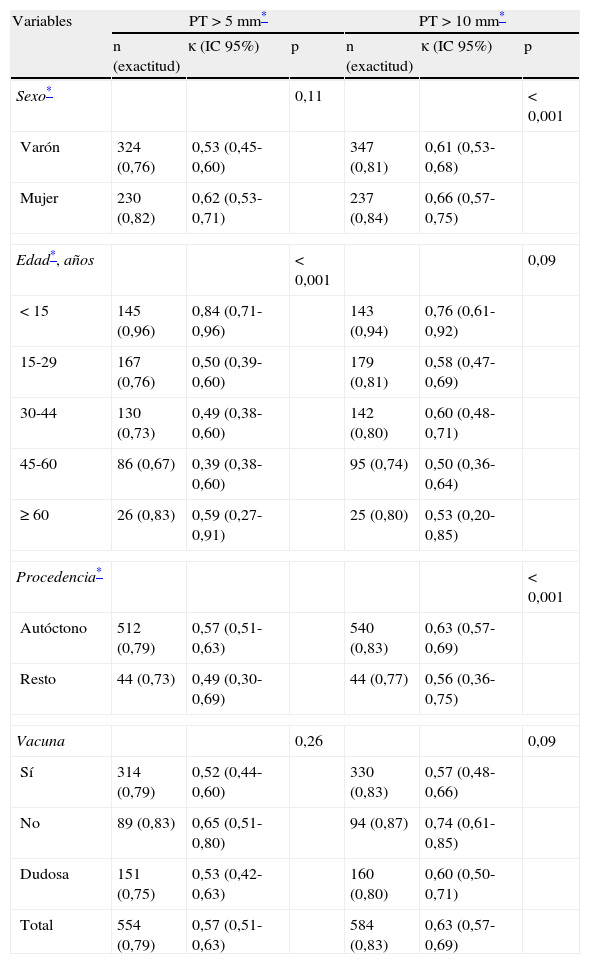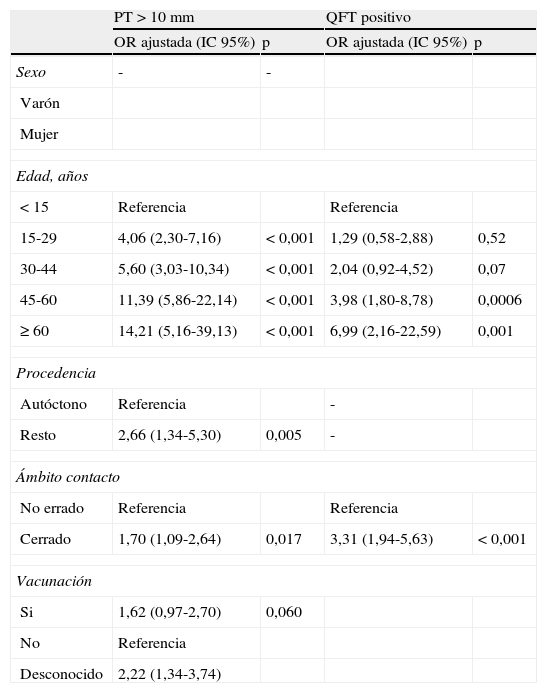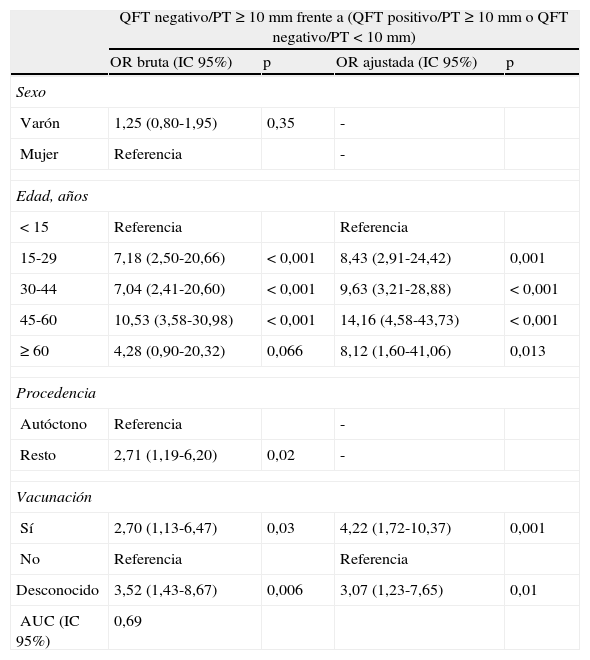El objetivo del estudio fue comparar la prueba de la tuberculina (PT) y el QuantiFERON-TB® Gold In-Tube (QFT) en el diagnóstico de la infección latente tuberculosa (ILT) en una población de contactos de enfermos con tuberculosis pulmonar, y analizar la influencia de distintas variables en la discordancia.
Pacientes y métodoEntre marzo de 2008 y septiembre de 2010, de una población de 300.000 habitantes del País Vasco, se analizaron todos los contactos de pacientes con tuberculosis pulmonar. A todos se les realizó la PT y se midió el valor del QFT. Se analizaron diferentes variables sociodemográficas y la vacunación, analizándose la discordancia entre ambas pruebas.
ResultadosUn total de 704 sujetos fueron incluidos en el estudio, con una edad media de 27 años. De ellos, 397 estaban vacunados, siendo la proporción similar entre autóctonos y extranjeros. El incremento de la edad hasta los 59 años (odds ratio [OR] 10,53; p<0,001), ser extranjero (OR 2,71; p=0,02) y la vacunación (OR 4,22; p<0,001) fueron variables predictoras de la discordancia entre una PT positiva y un QFT negativo.
ConclusionesParece que el QFT, solo o combinado con la PT, es un método seguro para el diagnóstico de la ILT y que su utilización contribuiría a una selección más específica de los individuos que necesitan un tratamiento preventivo.
Our objetive is to compare the tuberculin skin test (TST) and the QuantiFERON-TB® Gold In-Tube (QFT) in the diagnosis of latent tuberculosis infection (LTI) in a population of contacts of patients with pulmonary tuberculosis, and to analyze the influence of different variables in the discordance.
Patients and methodFrom March 2008 to September 2010, among a population of 300,000 inhabitants of the Basque Country, we analyzed all contacts of patients with pulmonary tuberculosis. All patients underwent the TST and the value of QFT was measured. Sociodemographic variables and vaccination were examined and we analyzed the discordance between the 2 tests.
ResultsSeven hundred and four were included in the study, with a mean age of 27 years. Of these, 397 were vaccinated, with similar proportion between native and foreign. Increasing the age to 59 years (odds ratio [OR] 10.53, P<.001), being foreign (OR 2.71, P=.02) and vaccination (OR 4.22, P<.001) were predictors of the discordance between a positive TST and negative QFT.
ConclusionsIt seems that the QFT, alone or combined with the TST, is a safe method for the diagnosis of LTI and its use would contribute to a more specific selection of individuals who would need preventive treatment.
Artículo
Comprando el artículo el PDF del mismo podrá ser descargado
Precio 19,34 €
Comprar ahora











